The Economist cites Brendan Foley's game-changing research
for deep sea archaeology
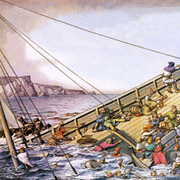
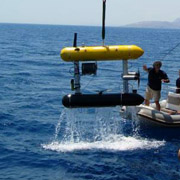

Excerpt from The Economist article
December 17, 2009
"A SHIPWRECK is a catastrophe for those involved, but for historians and
Read the full article at The Economist.
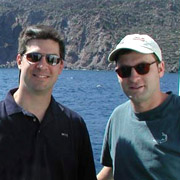
Brendan Foley and David Mindell
About Brendan Foley
Brendan Foley is a 2003 Ph.D graduate of the School's Program in Science, Technology, and Society (STS), where he worked closely with David Mindell, Dibner Professor of the History of Engineering and Manufacturing, Professor of Engineering Systems, and Director of STS. Together, Foley and Mindell founded MIT's DeepArch research group, and laid some of the intellectual, methodological and technical foundations for archaeology in the deep sea.
For the past 20 years, Foley has participated in archaeological and oceanographic expeditions using scuba, human-occupied vehicles, remotely operated vehicles, and autonomous underwater vehicles. He serves as a scientist and research associate in the Deep Submergence Laboratory, at the Woods Hole Oceanographic Institution, where he develops advanced methods for precise, accurate characterization of deep sea-floor features, particularly ancient shipwrecks. He is also a Visiting Scholar in the School's Program in Science, Technology and Society.
His ultimate research goal is to understand the transition to civilized, urban living in the Mediterranean Bronze Age (3000 to 1000 BC), based on investigation of pre- and proto-historic enabling technologies—such as metallurgy, seagoing ships, specialized cargo containers such as amphoras, and production and accounting technologies, including written language.
Some Findings
Mission to survey a Classical Greek wreck using the AUV "Seabed"
Brendan Foley
Ancient DNA in ceramic artifacts
Brendan Foley and Maria Hansson
A Philosophy for Archaeology in the Deep Sea
"Data from high definition camera systems, acoustic sensors, and chemical detectors can deliver answers to many first-order archaeological questions."
Brendan Foley
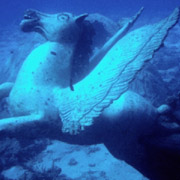
About Deep Sea Acheaology
Deep-sea archaeology is a relatively new academic discipline that combines traditional humanities-based archaeology with engineering advances that enable precision work with remotely controlled equipment in places that humans cannot reach.
To learn more about the field, visit:
The Undersea World of David Mindell
Story at The Boston Globe
An Acoustic Tape Measure
Story from The New York Times
Deep Arch Research Group | MIT
About
Deep Submersion Laboratory | WHOI
About
Deep-sea robot photographs ancient Greek shipwreck
Story at MIT News
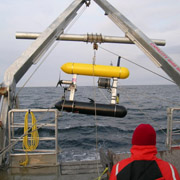
Photo Credits
Top row: Bridgeman Art Library; SeaBED Tioga; Bronze statue of the Roman Emperor Augustus, recovered from an underwater site in the Aegean (Brendan Foley, WHOI) Bottom: Seabed AUV during the Chios 2005 Classical shipwreck survey (Chris Roman, WHOI)